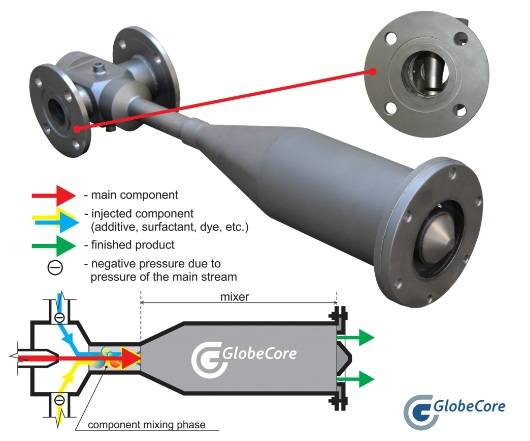Chemical, food, construction and many other industries cannot do without the preparation of different suspensions, emulsions and colloid solutions. They include lubricating oil emulsions, fuel emulsions, polymer modified bitumen as well as a wide range of food fat emulsions. Additionally, many kinds of gels, creams, and pastes are included in this list, so the list is virtually endless.
To obtain high quality homogeneous multi-component mixtures and colloid solutions, the production facilities use special blending units that consist of a dispenser. The dispenser is used for superfine grinding of solid and liquid components. If the production method requires a grinding down of the liquid fraction and evenly distributing it in a liquid basis, (dispersed medium) or requires preparing the suspension with a small amount of a solid phase, they routinely use a homogenizer.
The emulsion’s segregation resistance must be determined, first of all, by the size of the dispersed phase. For example, in a stable water-fat emulsion, the droplet size should be no more than 5 microns which can be produced by a modern centrifugal (rotary) homogenizer. A rotary homogenizer is used to reduce the droplet size of the emulsion to between 1 and 2 microns, also known as the so called secondary homogenization.
Many years ago, valve homogenizers were widely used and accepted as standard within industry. Now the preference is given to the centrifugal (rotary) homogenizers due to the following benefits:
(1) Reduction of the processed materials down to 1 micron; (2) compact size of the equipment; (3) low power consumption; (4) simple design; and (5) high degree of reliability.
Depending on the model, the homogenozer’s rotor speed varies from 2,000 to 18,000 rpm. The intensive vortexing and micro cavitation processes ensure the homogenization and stability of the mixture. If the technological process or recipe requires the production of a suspension with a large content of a solid phase (up to 40%) or a high stable emulsion, or a fine suspension, then solid and liquid substances are mixed in a colloid mill (dispergator).
A colloid mill allows not only for the intensive blending of particles and droplets in a suspension or thick emulsion, but also for grinding solid fractions of the suspension (emulsion droplets) down to the size of between 1 and 2 microns producing high-quality suspensions and emulsions.
In terms of design, colloid mills resemble rotary (centrifugal) homogenizers. The wet method is the basis for the grinding of solids in a colloid mill. The main working body of a colloid mill, as well as a homogenizer, is constituted by a pair of drives. One of the drives serves as a stator and another as a rotor.
The linear velocity of the rotating drive surface can work up 125 m/s. This high speed provides the intensive turbulent processes in the intradiscal space that contributes to the effective grinding of the dispersed phase. It ensures even distribution in the processed and dispersed medium.
The practice has shown that modern twenty first century colloid mills can provide the highest degree of dispersion and emulsification that meets the requirements of the majority of industrial technological processes.

